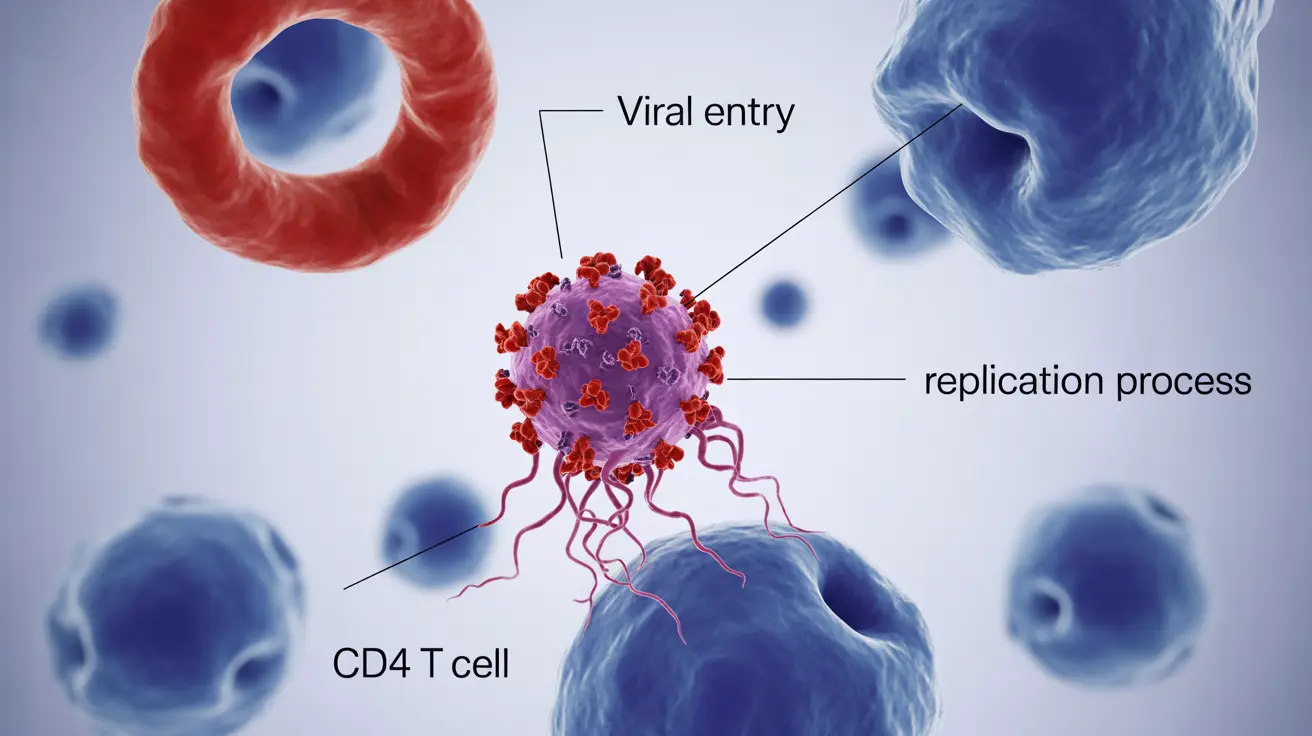Human Immunodeficiency Virus (HIV) is a complex viral infection that specifically targets and destroys critical components of the immune system. Understanding how HIV destroys immune cells is crucial for recognizing the importance of early detection and treatment, as well as preventing its progression to AIDS.
In this comprehensive guide, we'll explore the mechanisms of HIV infection, its effects on the immune system, available treatments, and prevention strategies that can help protect against this serious condition.
The Initial Impact: How HIV Enters and Attacks the Body
When HIV first enters the body, it primarily targets CD4 T cells, which are essential components of the immune system. The virus attaches to these cells using specific proteins on their surface, allowing it to inject its genetic material and begin the process of viral replication.
During this initial phase, many people experience flu-like symptoms, including:
- Fever and chills
- Muscle aches
- Sore throat
- Fatigue
- Swollen lymph nodes
- Rash
The Mechanism of Immune System Destruction
HIV destroys the immune system through several sophisticated mechanisms. Once inside CD4 cells, the virus hijacks the cellular machinery to create copies of itself. This process ultimately leads to the death of infected cells and the release of new viral particles that can infect more CD4 cells.
Direct and Indirect Damage
The virus causes damage in two primary ways:
- Direct cell death through viral replication
- Indirect destruction through chronic inflammation and immune system activation
The Cascade Effect
As HIV destroys more CD4 cells, it creates a devastating cascade effect:
- Weakened immune response to other infections
- Increased vulnerability to opportunistic diseases
- Compromised ability to fight off cancers
- Progressive decline in overall immune function
Treatment Options to Combat HIV
Modern medicine has developed effective treatments to help prevent HIV from destroying immune cells. Antiretroviral therapy (ART) works by:
- Blocking viral replication
- Preserving CD4 cell counts
- Reducing viral load in the body
- Preventing progression to AIDS
The Importance of Early Treatment
Starting treatment early is crucial for preventing extensive immune system damage. Current guidelines recommend beginning ART immediately after diagnosis to maintain immune function and reduce transmission risk.
Prevention Strategies and Risk Reduction
Preventing HIV infection is possible through various methods:
- Using barrier protection during sexual activity
- Taking PrEP (Pre-Exposure Prophylaxis) if at high risk
- Getting regular HIV testing
- Avoiding sharing needles or other injection equipment
- Seeking immediate medical attention after potential exposure
Frequently Asked Questions
What are the main symptoms of HIV infection in its early stages?
Early HIV symptoms typically appear 2-4 weeks after infection and may include fever, chills, sore throat, rash, muscle aches, and swollen lymph nodes. These symptoms often resemble the flu and can last for several weeks.
How does HIV destroy CD4 cells, and what are the consequences for the immune system?
HIV destroys CD4 cells by entering them, using their machinery to replicate, and ultimately causing cell death. This process progressively weakens the immune system, making the body vulnerable to opportunistic infections and certain cancers.
What treatments are available to slow or halt the progression of HIV to AIDS?
Antiretroviral therapy (ART) is the primary treatment for HIV. Modern ART combinations can effectively suppress viral replication, preserve immune function, and prevent progression to AIDS when taken as prescribed.
Can you prevent or reduce the risk of getting HIV through lifestyle changes or medical interventions?
Yes, HIV prevention is possible through consistent condom use, PrEP medication for high-risk individuals, regular testing, avoiding shared needles, and seeking immediate post-exposure prophylaxis (PEP) if exposed. These methods, when used properly, significantly reduce transmission risk.
What is the difference between HIV and AIDS, and how are they diagnosed?
HIV is the virus that causes AIDS (Acquired Immune Deficiency Syndrome). AIDS is diagnosed when HIV has severely damaged the immune system, typically indicated by CD4 cell counts below 200 cells/mm³ or the presence of specific opportunistic infections. HIV is diagnosed through blood tests that detect viral antibodies or the virus itself.




